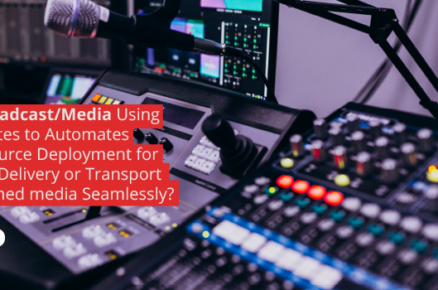Manufacturing Setup
Manufacturers have been exploring ways for creating, manufacturing, and delivering customer-centric products since the dawn of the industrial era. Customer expectations have developed throughout time, leaving manufacturers with little alternative but to maintain their facilities up to date in order to meet customers’ needs. However, there has lately been a shift in customer perception, from purchasing a personalized product to subscribing to a personalized service.
Evolved Customer Mind-set
As a result of this trend, manufacturers have no choice but to design products to match the diverse wants of each consumer in the target group. The emphasis on hyper-personalization is increasing the complexity of supply chain networks. This has put a great strain on creating improved planning and scheduling systems to manage raw materials in real time in response to quickly changing operational priorities. Any lag in time to market can have a huge impact on orders and result in catastrophic losses.
Challenges faced by Manufacturers
In today’s environment, artificial intelligence (AI) and machine learning (ML) are carrying the weight of such sophisticated planning systems and making them smarter. AI and ML-powered systems require greater computational capacity to handle data at higher velocities and variability in order to provide real-time outputs with linked equipment and integrated processes.
Large manufacturers control a global network of warehouses, logistical hubs, and distribution centers. They also have a panel of sub-manufacturers who bring in parts and components. These network nodes are not static and alter constantly due to new markets, acquisitions, alliances, shifting supplier clusters, or changing consumer groups. The adaptability of such networks adds complexity to their administration.
conventional inventory production and supply chain planning solutions have begun to fall short, because:
- Schedulers must update the optimization schedule in real time more frequently, as well as undertake dynamic inventory allocation and production planning. Each updated, added, or deleted node increases the complexity, and planning systems take longer to deliver results, sometimes even a day – to put this in context, picture an hour’s delay for a facility manufacturing $1 million worth of products in an 8-hour shift. This would have a substantial impact on throughput.
- To guarantee that production does not halt, planners must frequently perform various “if-this-then-what” simulations. These simulations aid in developing a best-fit strategy to accommodate a change in order, completing a pending backlog for a priority client, or even building a prototype to support a marketing request. Complex network simulations typically will not take more than an hour to generate a strategy. An hour’s wait between two task stations on a shop floor will result in nothing but losses due to decreased cushion time.
Consider the following scenario: a company must distribute goods through 5 trucks over 20 different routes. This implies that the planners must select the best choice among 205 or 32,00,000 possibilities. Such problems can be solved quickly with current processing hardware, but when the number of trucks is increased to 100 (a common case for a manufacturer), the possibilities become enormous, and in order to choose the optimal route, planners must also consider data such as traffic, weather, vendor capacity, production plans, and so on. Clearly, such simulations will take time on a traditional computer.
What is Quantum Computing?
Quantum computing ensures that manufacturers will be able to deal with such issues in the near future. This is due to quantum computers’ ability to solve complex problems at extremely fast speeds. The central concept of quantum computing is the use of Qubits. Qubits, unlike conventional bits, may have both 0 and 1 states at the same time.
Let’s look at how quantum computing can contribute. Consider two complex numbers, x and y. The ability to exist in multiple states is referred to as superposition. We can’t measure the value of two numbers in quantum physics; instead, when we measure a qubit, we receive the states 0 with a probability of |x|2 and 1 with a probability of |y|2. The total of both probabilities should equal one. As a result, when a quantum operation is done on a qubit, it must be performed on all states at the same time.
Simply put, a qubit x(1) + y(0) can have various states ranging from 0 to 1, but when measured, it will be either 1 or 0. This indicates that a single operation may be performed on 2n values at the same time.
This proves that quantum computing cuts down the time for data processing and is more efficient than the traditional computing methods practiced by manufacturers.
So, How Does Quantum Computing Help?
So, what does this have to do with our optimization problems faced by manufacturers? These issues must be handled through traditional computing by calculating permutations and comparing them one at a time. Because of the properties of qubits and superposition, quantum computing will perform the specified operation to all potential states represented by a qubit. Instead of zillions of operations, one-at-a-time quantum computing can cut the number of repetitions, considerably shortening the time required to identify the best-fit plan for manufacturers compared to traditional computing.












